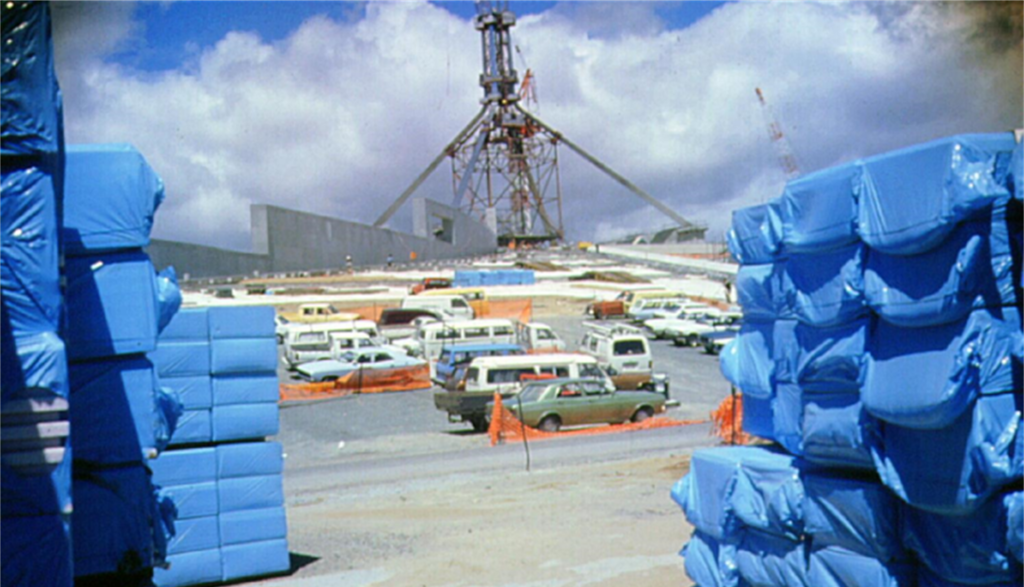Technical Note 2020/01 – AS/NZS 4859.1:2018, NCC 2019 SECTION J AND AGED R-VALUES
Introduction
Changes in the Australian National Construction Code (NCC), 2019 with respect to Energy Efficiency (Section J), came into effect as of May 1st, 2020 after a transition period of one year. A more rigorous Section J lays out the requirements for the energy efficiency of new buildings and is the most significant change since Section J was introduced back in 2005.
Aged / Long Term R-values
At DCTech we are unashamed to say that we know a few things about the long term performance of thermal insulation. Some of the earlier standards that preceded AS/NZS 4859.1 had just been published when Styrofoam extruded polystyrene XPS was being installed on the roof of New Parliament House.

DCTech backed by our overseas partners have always led the way in introducing to Australia, high performance insulation products such as XPS, PIR in 2007, and phenolic insulation in 2008. We have long understood the behaviour of insulation products over time and recognise that what we build today leaves a legacy and needs to perform for the life on the building, and in some cases the life of the next building too.
DCTech welcome these changes to Section J and the revision of the AS/NZ 4859 standard.
What is AS4859.1:2018?
AS/NZS 4859.1:2018, together with AS/NZS 4859.2:2018 forms a suite of standards that govern the requirements for thermal insulation products being used in buildings in Australia. Updated in 2018, AS/NZS 4859.1:2018 includes more comprehensive requirements for insulation products compared to its predecessor AS/NZS 4859.1:2002 including specific performance testing and installation requirements for all types of insulation. Section J of NCC 2019 states, Insulation must comply with AS/NZS 4859.1:2018
The declared R-value of insulation products is now determined as a statistically adjusted average of a set of 10 specimens instead of a single specimen. Rigid board products also have new ageing requirements so that buildings can be designed with long term R-values in mind. R-values must be calculated from testing at 23°C for Australia and 15°C for New Zealand.

Thermal Conductivity Declarations
The ‘Declared R-value’ or ‘Declared λ-Value’ cannot be higher or lower than the statistically adjusted average R50/90 or λ50/90 respectively. R50/90 or λ50/90 represent a mean value that represents 50% fractile with 90% confidence. There are also clear rules on the conservative rounding methodology that must be applied to R-values and λ- values as summarised below

Labelling
Product labelling must now include the location of the manufacturing plant. Total R-values or system R-valued are no longer acceptable for product labelling.
What does this mean for insulation in Australia?

Changes required to R-value declarations and labelling will certainly reduce confusion around thin reflective insulation products that have not always been installed in a manner that achieves intended total R-values. The declared product R-values of many products will certainly decrease for the same thickness of insulation. For projects that need to comply with the NCC 2019 Section J, specifiers and builders need to be vigilant and ensure that products they are specifying, and purchasing, abide by the amended standard AS/NZS 4859.1:2018.
What about NCC 2016 projects?
Because changes are not retrospectively applied, historic R-values can still be applied for NCC 2016 projects. However, DCTech hopes that in the interests of long term energy efficiency of buildings that the new aged R-values are applied wherever space permits.
What if you are unable to get answers from suppliers?
Where manufacturers and suppliers do not follow the new standard, the advertised thermal values may not reflect the long-term performance of the insulation. This will affect the thermal performance for the entire lifetime of newly completed buildings and also result in compliance issues. Insist that your insulation supplier provides a current testing certificate from a NATA or ILAC approved lab to AS/NS 4859.1:2018. AS/NS 4859.1:2002 no longer applies for NCC 2019 Section J projects.
Be sure to ask to see a AS/NZS 4859:2018 test report
What does this mean for DCT Products?
New ageing requirements are designed to reflect the performance of foamed insulation products over their lifetime.

Aged R-values should indicate the thermal performance of the insulation predicted over 25 years. It is well understood these will be lower than the “fresh” values not long off the production line.

DCTech are pleased to see that the Australian Standard is at last catching up with the rest of the world for controlled testing of aged products. This is the norm for all our overseas manufacturers and does not present any challenges in production, quality control or certification. DCTech have regularly made available aged values tested to overseas standards in addition to insulation values in accordance with the AS4859.1:2002 standard called up in our local codes. Many of DCTech’s customers have been specifying our insulation for decades based on long term performance rather than minimum compliance and have based specifications on more conservative aged testing. Customers focused on the minimum required thickness for compliance will now find that a greater thickness of the insulation will be required to meet the same minimum Rvalue from previous versions of the NCC. With these changes, the long-term performance of insulation supplied by DCTech and our competitors will now be declared and consistently tested on a level playing field.





Leave A Comment
You must be logged in to post a comment.